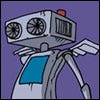What are you working on?
I've finally managed to join this community from kbin, seems we were having federation problems with programming.dev.
So anyway, what sorts of projects are you all using Nim for?
Edit: Post isn't propagating. Maybe this edit will help?


Add comment